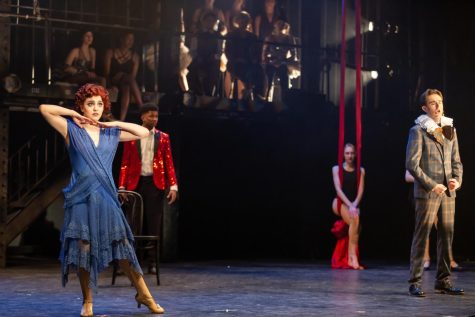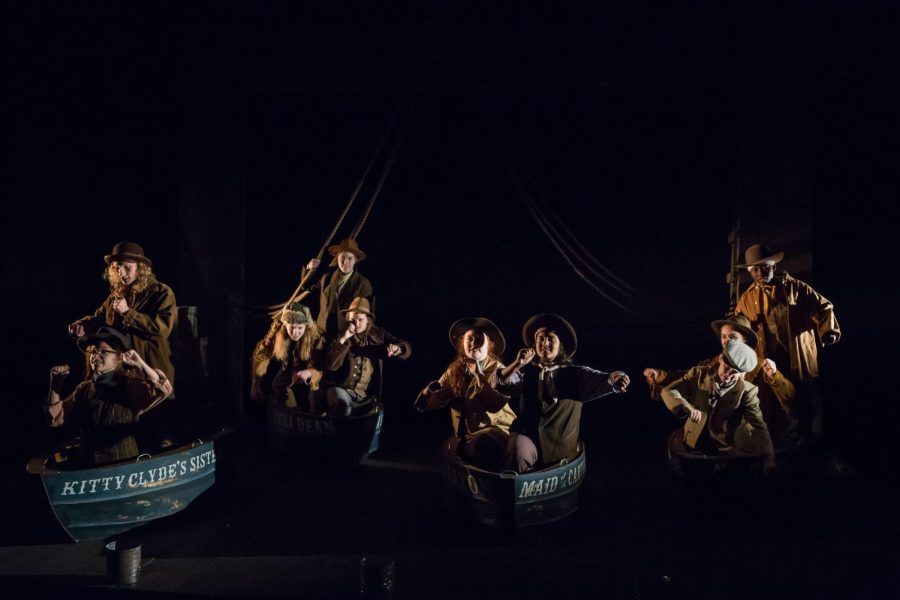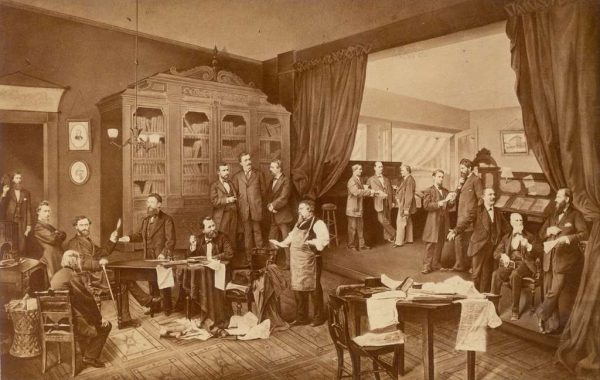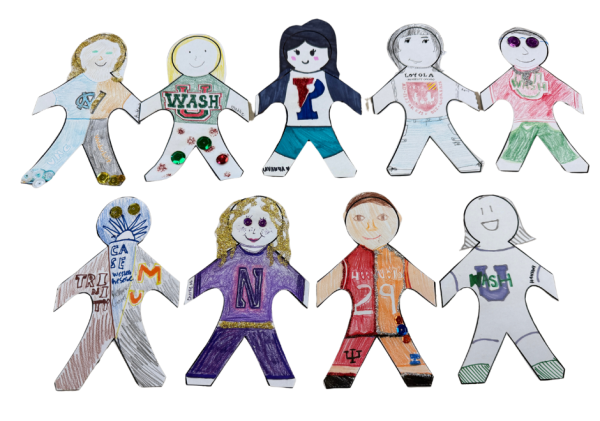Theater’s Diversity Problem (and What CHS Can Do)
Possible Next Steps for CHS Theater
How do you tell a story when you don’t know the ending?
Theater is an amalgamation of artistic forms– dance, music, writing– all of which lend themselves to storytelling. But the recent controversy at CHS regarding diversity and race in theater asks us to consider how many more stories haven’t yet been shared.
It’s no secret that theater is a dominantly white endeavor; this fact is seen at all levels of theater, and students are not pleased to see it here at Clayton.
So, faced with a diversity problem that transcends district boundaries, what is a high school theater department to do?
CHS junior Kendall Turner is currently the stage manager for the upcoming CHS production, “Beauty and the Beast,” as well as Scurius in the play, “The Squirrels.” Turner has participated in CHS theater for the last two years. She is also one of the only Black participants.
“We have less people of color than we’d like to […] And I guess if we had more diversity, we would be able to do more diverse plays,” Turner said.
Originally, the theater department was planning to do the play “Anon(ymous),” which had a significant number of nonwhite roles. The play was changed to “The Squirrels” at the last minute due to a lack of nonwhite actors to play the roles.
“One of the plays that was going on was Anon(ymous), which was a really diverse play. I was actually really excited to do that, because [there was] a part in there that I really liked. But we weren’t able to do it, because we didn’t have enough people of color to do it,” Turner said. “People want to do shows they know about […] There’s this show they did a few years back that had a lot of Black people in it, and a lot of Black people auditioned for it.”
The play Turner was referring to was the mainstage hit, “Hairspray”.
She theorized that since “Anon(ymous)” wasn’t as well known as a play, new people weren’t as interested in auditioning.
However, Turner believes that things are starting to move in the right direction.
“[The department is] starting to show up. They’re beginning to give descriptions for this character and what they need for this character. If this character is Black, they’re going to need a Black actress or actor. So they’re definitely starting to go in the right direction,” Turner said. “There are freshmen that are people of color coming in. And that’s exciting for me.”
The main obstacle to attracting new participants is the prevalent “theater kid” stereotype, which perpetuates the idea that only a certain kind of person can do theater.. This issue is compounded by the fact that there are a lot of little tricks that you have to know to land a role in the first place. For example, it’s considered bad form to sing a song from the musical you’re auditioning for. This might seem counterintuitive. After all, wouldn’t that best show your fitness to be in the production? In fact, using a song from the show, or even one that has recently been performed, is likely to do more harm than good for your audition.
Another obscure necessity is to “slate” at the beginning of your audition, which just means to announce your name, grade, and the song you’re auditioning with (if it’s for a musical). This may seem small, but can make you look more professional and committed if included.
Not knowing these trade secrets could be the deciding factor on whether or not you make the cut. To some extent they may help discern the most committed candidates, but they also run the risk of disqualifying otherwise talented candidates who just didn’t know the tricks of the trade.
The theater department already works to combat this by offering audition workshops, but it’s important not to stop there. High school theater is, by definition, not professional. That means that the department has an opportunity to bring in new voices, voices that may not otherwise have been heard. And that means going beyond the theater community that already exists and finding those people with a passion they didn’t know they had.
People in theater know how amazing of an environment it is, but there’s the idea that only a certain kind of person can do theater. A stereotype exists of a “theater kid”: a student who takes hours of dance, singing, and acting lessons, who’s constantly belting show tunes, and who wants nothing more than to be center stage.

The theater department at CHS doesn’t necessarily need to make an effort to break out of that stereotype; there are enough people here who fit into theater as is. However, that stereotypical group is mostly white, and in order for the department to gain more diversity, it needs to appeal to different types of people– not based on race, but on interests as well as academic and social priorities.
Claudia Taylor, a senior who is also President of the CHS Thespian Troupe, spoke to us about her take on diversity in theater and what she’s already working on. Taylor explained that her role as president is to welcome new people and organize events for the Troupe, and she’s already using those responsibilities as an opportunity to reimagine what theater is. Taylor ran for Thespian Troupe President unopposed, which allowed her to hit the ground running at the first Troupe meeting.
At that very meeting, she introduced the idea of stage reads, which would involve students reading the script of a play onstage without props or tech. This would only require around a week’s rehearsal as students would have their scripts, and would facilitate discussions around those scripts. “I’m really passionate about it because it allows students who don’t have the time to commit to a full show or who aren’t really sure what theater is all about to just try it for a week or so,” Taylor said.“It creates opportunities for those students to try theater as a little appetizer rather than jumping right in.”
Taylor was inspired by the play “Appropriate,” which tells the story of a family that finds out that their now-deceased patriarch owned a plantation. She said, “We knew this wasn’t something that we could ever perform as a mainstage show, since it’s too graphic to be performed by students. So we figured it would be best if the stage directions, which are very dramatic, to be read aloud rather than performed. The props, which are graphic as well, [would] be spoken rather than seen, [and] costumes would not be involved at all. This would just be students sitting down, honestly speaking the words on the page as the author intended.”
For such stage reads, Taylor also intends to have an expert on the topic join the actors to help guide the discussion between the performers and the audience about the script. The project would allow students to have conversations about these heavy topics and really explore theater as a catalyst for conversation rather than a form of entertainment.
She was especially interested in recruiting students from activities like Speech and Debate, Cheer, and Mock Trial, who already use similar skills to those required by theater. “Those things are huge time commitments,” Taylor said. She theorized that for those students, theater is like a road not taken. For them, the time commitment of their current activities is already too great to add a full show rehearsal in.
Taylor hopes to change that narrative with the introduction of lower-commitment productions like stage reads. In addition, she proposed working with English teachers to offer extra credit for theater participation, emphasizing the literary aspect of theater as much as the performative aspect.
She also acknowledged that theater can seem intimidating, saying, “I think that theater in itself is not a very welcoming place for people who aren’t shiny and bright and have the biggest jazz hands. I think a large portion of our student population are those sort of people who have a lot to express [but] aren’t interested in expressing [it] in that shiny, performative way.” Taylor believes that the introduction of stage reads will bring another dimension in to theater, a dimension that will make it more accessible to more people.
The solution to a lack of diversity in CHS theater isn’t to drag students of color to auditions. Rather, the department must look at the root causes that make theater more appealing to white students than nonwhite ones. The kinds of people that come in already knowing that they want to do theater are dominantly white. This isn’t the high school’s fault, but a result of both cultural norms and socioeconomic factors that make theater more accessible to white people of all ages.
But with every new voice that joins comes a new story to tell. The whole point of theater is to immerse the audience in a beautiful story. The department cannot change the history of diversity in theater, but it can write the ending.
A $50 or more donation includes a subscription to the Clayton High School Globe 2024-2025 print news magazine.
We will mail a copy of our issues to the recipients of your choice.
Your donation helps preserve the tangible experience of print journalism, ensuring that student voices reach our community and that student democracy thrives.

Pronouns: she/her
Grade: 12
Years on staff: 3
What's an interesting fact about you? I write poetry for fun (my current favorites are Ada Limon and Richard Siken).
What's...








